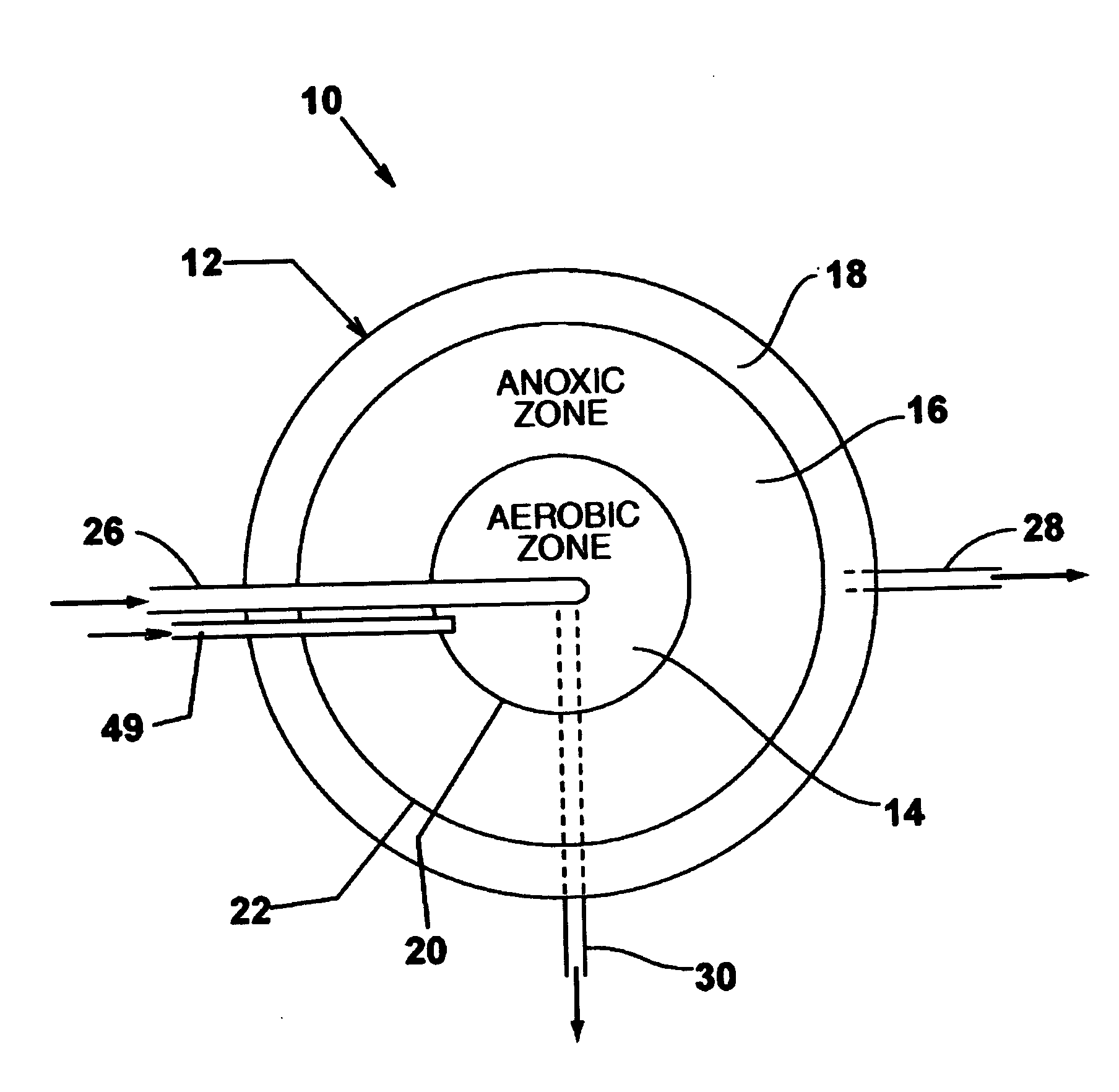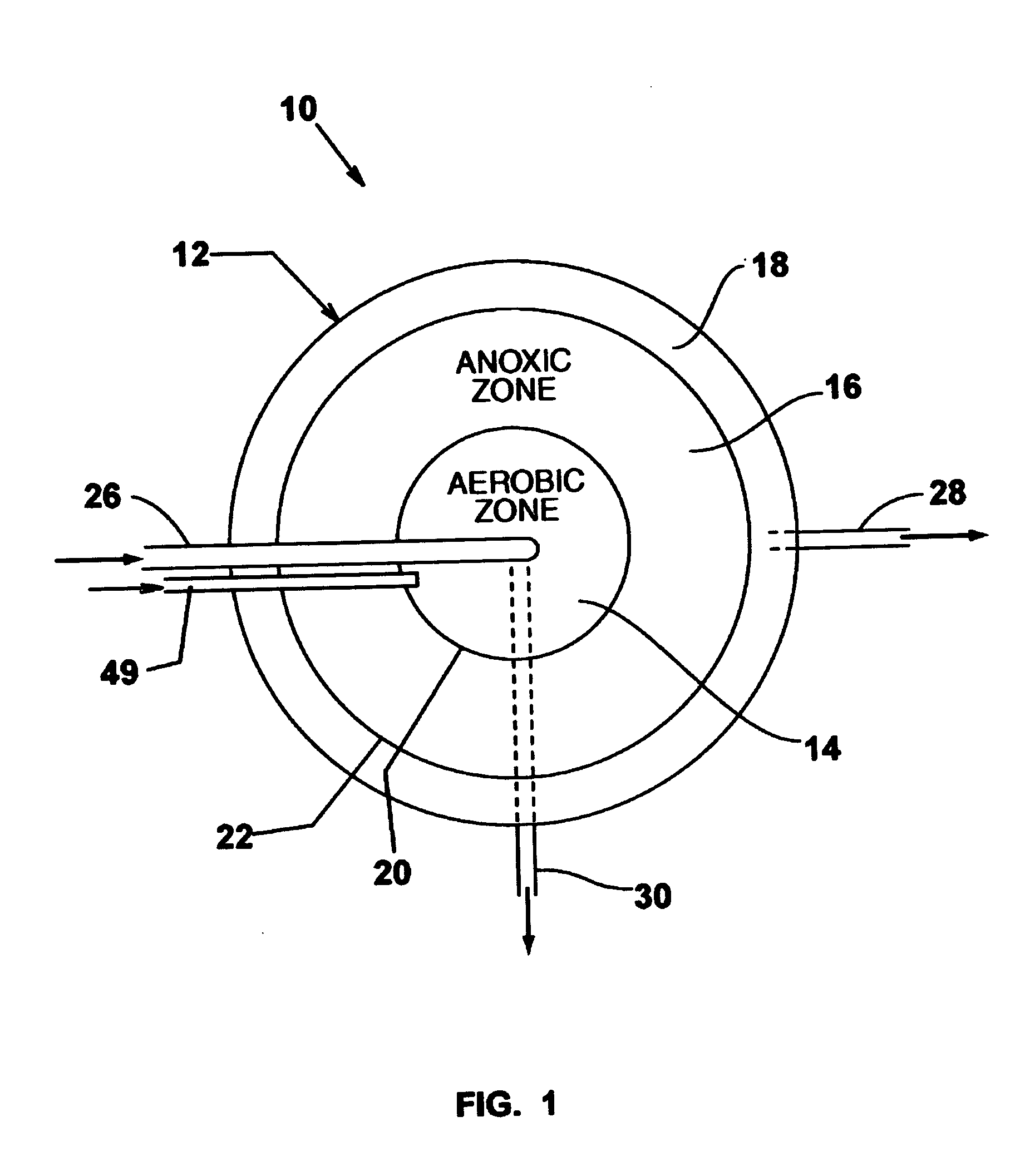Single vessel multi-zone wastewater bio-treatment system
- Summary
- Abstract
- Description
- Claims
- Application Information
AI Technical Summary
Benefits of technology
Problems solved by technology
Method used
Image
Examples
example 1
ILLUSTRATIVE EXAMPLE 1
As an illustration of the process in an experimental slaughterhouse wastewater treatment system, the influent of the prior art experimental system around U.S. Pat. No. 5,441,634 includes: water, total suspended solids ranging from 500 to 900 mg / l, Bio-Chemical Oxygen Demand (BOD-5) ranging from 650 to 1000 mg / l, Total Nitrogen ranging from 150 to 200 mg / l and phosphorus ranging from 20 to 40 mg / l.
The effluent of the prior art process and system of U.S. Pat. No. 5,441,634 treating wastewater from the above illustrative slaughterhouse includes water, suspended solids, nitrogen, and phosphorus.
The influent of the instant invention for the above slaughterhouse includes the same characteristics as the influent of the prior art Edwards apparatus.
The effluent of the instant invention treating wastewater from the above slaughterhouse also includes water, suspended solids, nitrogen, and phosphorus.
Table 1 below illustrates the dramatically better processing ach...
example 2
ILLUSTRATIVE EXAMPLE 2
The relevant influent compositions (liquid and solid) of the prior art pilot wastewater treatment system of U.S. Pat. No. 5,441,634 with a flow of 2870 liters per day, providing treatment for the discharge of a food processing facility producing French fries includes: water, total suspended solids averaging 3300 mg / l, Bio-Chemical Oxygen Demand BOD-5 averaging 2480 mg / l, Total Nitrogen averaging 140 mg / l and phosphorus averaging 44 mg / l.
The effluent of the prior art system treating wastewater from the above food processing facility includes water, suspended solids, Total Nitrogen and phosphorus.
For the illustrative experimental pilot food processing wastewater treatment system, the influent of the system of the invention includes the same contents and characteristics as the prior art Edwards system.
The effluent of the prior art system treating wastewater from the above food processing facility includes water, suspended solids Total Nitrogen and phosphoru...
PUM
| Property | Measurement | Unit |
|---|---|---|
| Biological properties | aaaaa | aaaaa |
Abstract
Description
Claims
Application Information
 Login to View More
Login to View More - R&D
- Intellectual Property
- Life Sciences
- Materials
- Tech Scout
- Unparalleled Data Quality
- Higher Quality Content
- 60% Fewer Hallucinations
Browse by: Latest US Patents, China's latest patents, Technical Efficacy Thesaurus, Application Domain, Technology Topic, Popular Technical Reports.
© 2025 PatSnap. All rights reserved.Legal|Privacy policy|Modern Slavery Act Transparency Statement|Sitemap|About US| Contact US: help@patsnap.com



